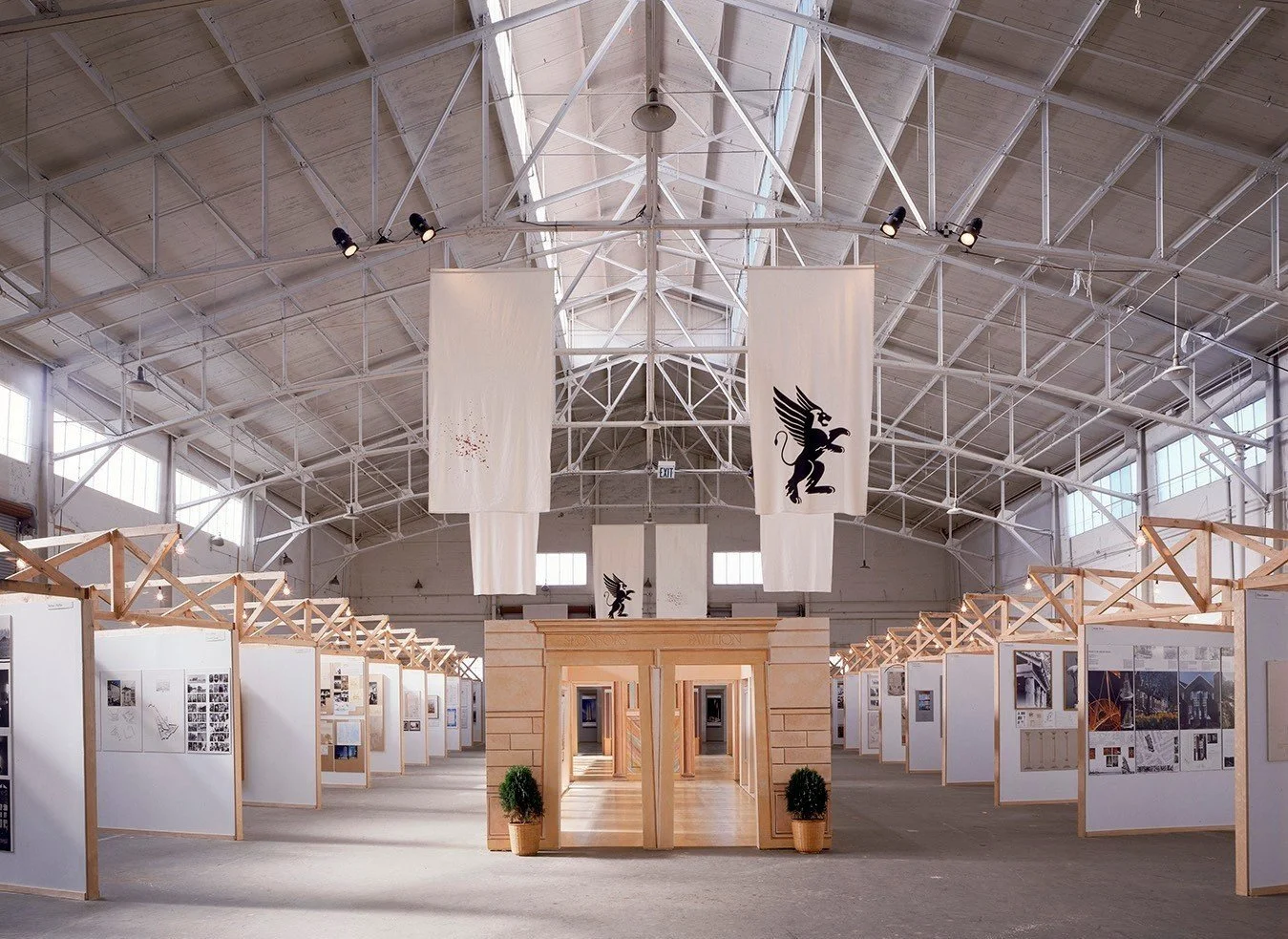Friends of the Biennale
Virginia Westover, a public relations consultant, and Joseph Weiner, a real estate developer, visited The Presence of the Past exhibition at the 1980 Venice Biennale at the encouragement of architect Mark Mack. The couple knew Mack through a community of San Franciscans interested in architecture, urbanism, and design that had coalesced around an architecture lecture series (“Western Addition”) that he ran, as well as William Stout Architectural Books in North Beach. Westover and Weiner formed the “Friends of the Biennale” to fundraise and organize for the exhibition to travel to San Francisco in 1982, after it was shown in Paris.
The group identified Fort Mason Center, which had recently transitioned from a military site to an arts and culture center, as an ideal location. Pier 2 of Fort Mason Center was one of the few sites in the city that could fit the three-story architectural facades of the Strada Novissima, and as an adapted naval site, it had an interesting parallel history to the former rope factory at the Venice Arsenale, where the exhibition was first shown. The site was approved by the original curator, Paolo Portoghesi, during a trip to San Francisco.
The list of “Friends of the Biennale” and exhibition funding benefactors and donors reads like a who’s who list of San Francisco developers, contractors, and architects — everyone from Southern Pacific to Rockefeller Center Development Corp. to Dinwiddie Construction to Mario Ciampi to Whisler-Patri to SWA Group.
In addition to the Strada Novissima and International Gallery, the exhibition at Fort Mason Center included four new San Francisco facades, a “Sponsor’s Pavilion” designed by Thomas Gordon Smith, an outpost of William Stout Architectural Books, and an “Italian Marketplace” with food and bar purveyors. The marketplace was designed by Batey & Mack, who also designed one of the four San Francisco facades and were responsible for the overall exhibition design at Fort Mason Center, utilizing their characteristically California casual concrete block.
The original architectural facades at the Venice Biennale were constructed by the technicians of Cinecittà film studios in Rome. The facades were then reconstructed inside Fort Mason Center after being shipped from Europe by boat by FM Productions — the famous lighting and staging company started by music promoter Bill Graham. The graphic design and identity of the exhibition, including banners installed throughout Pier 2, were done by Thomas Ingalls + Associates. Ingalls also designed all the promotional materials, including posters and brochures, and hiring Richard Sexton to document the exhibition for a special issue of Archetype.
Richard Sexton recalls the chaos and excitement of the exhibition coming together. Read More.


